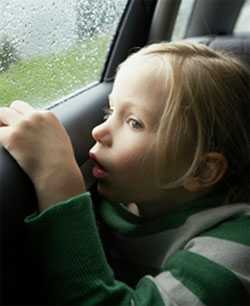Frequently Asked Questions (FAQ) about Lightning Strikes
On this Page
- 1. Who’s at greatest risk?
- 2. How does it cause injuries?
- 3. What happens to the body?
- 4. What should I do if I see someone struck?
- 5. How can I protect myself?
- 6. What should I do if I’m caught outside?
- 7. What is a safe shelter?
- 8. What should I do if I am inside during a lightning storm?
- 9. What is my risk?
- 10. How many people die from lightning?
- 11. How many people are injured?
- 12. Are phones safe to use?
- 13. Is it safe to be under a tree?
- 14. Is it safe to take a shower or bath?
- 15. Is it safe to touch someone struck?
- 16. Can I be struck if there’s no rain?
- 17. Does it strike the same place twice?
- 18. What is heat lightning?
- 1. Who is at greatest risk for lightning strikes?
Males are five times more likely than females to be struck by lightning. Most lightning strike victims are children and young adults aged 15–34 years who work outside or regularly participate in outdoor recreation. Construction and farming are the two most common occupations for victims of lightning strikes. Regional, seasonal, and temporal differences affect the risk of lightning injury. For instance, most lightning strikes occur in the summer months, especially July, during the afternoon and evening. Also, southeastern states are particularly at risk, with Texas and Florida having the largest number of lightning-related deaths.
- 2. How does lightning cause injuries?
Lightning can cause injuries in several ways:
- Direct strike: Victims may sustain a direct strike, which is often fatal.
- Contact injury: This occurs when lightning strikes an object, such as a car or metal pole, that the victim is touching.
- Side flash: This occurs when lightning splashes or bounces off an object, such as a tree or person, onto the victim.
- Ground current: This occurs when lightning strikes the ground near a victim and the ground current passes from the strike point through the ground and into the victim.
- Streamer: When the air is charged with electricity during a lightning storm, bursts of energy, or streamers, can come upward from objects near the ground. Sometimes these streamers travel upwards through people, causing harm to the victims.
- Blast injury: The lightning’s blast effect, thunder, may cause either primary injury, such as ruptured eardrums, or tertiary injury, such as blunt trauma when the victim falls or is thrown.
- 3. What happens to the body as a result of a lightning strike?
About 10% of people struck by lightning die, most commonly due to heart attack. Other lightning injuries include blunt trauma, neurological syndromes that are usually temporary, muscle injuries, eye injuries ("lightning-induced cataract”), skin lesions, and burns.
- 4. What should I do if I see someone get struck by lightning?
Immediately call 911 for help. It is safe to touch a victim who has been struck by lightning. For more information, visit our Web page on administering first aid to a lightning victim.
- 5. How can I protect myself from a lightning strike?
Be prepared. Check the weather before participating in outdoor activities. If thunderstorms are forecast, change plans or ensure that a safe shelter is nearby.
While inside during a thunderstorm:
- Stay off corded phones. Cell phones and cordless phones are okay.
- Do NOT use computers or electronic equipment.
- Stay out of the shower and away from other plumbing. This includes avoiding washing dishes.
- Stay away from windows and doors.
If outside during a thunderstorm:
- Seek shelter immediately.
- Do NOT lie on the ground or seek shelter under a tree!
For more information about lightning safety, visit our lightning safety page.
- 6. What should I do if I am caught outside during a lightning storm?
Do NOT lie on the ground. Lightning causes electric currents along the top of the ground that can be deadly over 100 feet away. There is no safe place outside so take immediate action to get to a safer location. Avoid anything that will increase your risk of being struck by lightning such as being near or under tall trees.

- 7. What is considered a safe shelter during a lightning storm?
A safe shelter is a fully enclosed vehicle or a shelter that has four walls and a roof. Examples of safe shelters include homes, offices, shopping centers, and hard-top vehicles with windows rolled up. Open vehicles (such as convertibles, golf-carts, and motorcycles) and open structures (such as porches, gazebos, baseball dugouts, and sports arenas) are NOT safe during a lightning storm.
- 8. What should I do if I am inside a building during a lightning storm?
To stay safe inside a building:
- Stay away from electrical equipment or cords, including corded phones.
- Avoid plumbing; do NOT wash your hands, take a shower, or wash dishes.
- Stay away from windows and doors, and stay off of porches and balconies.
- Do NOT lie down on or lean against any concrete floors or walls.
- 9. What is my risk of being struck by lightning?
The odds of being struck by lightning in a given year are about 1 in 500,000. However, some people may have a higher risk if they work outside or live in certain parts of the country such as Florida or Texas.
- 10. How many people die from lightning strikes each year in the United States?
About 10% of people struck by lightning die. Over the past decade (2003–2012), lightning has caused an average of 35 deaths per year. For more information on the number of deaths per year, please visit the NOAA website.
- 11. How many people are injured from lightning strikes each year in the United States?
Lightning strike injuries are not well documented. However, FEMA estimates that about 300 people are injured each year due to lightning.
- 12. Are cell phones and cordless phones safe to use during a lightning storm?
Yes. Cell phones and cordless phones are safe to use during a lightning storm as long as they are not connected to an outlet through a charger. Do not use corded phones.
- 13. Is it safe to be under a tree during a lightning storm?
No. Being underneath trees is the second leading cause for lightning deaths. For more information on safe shelters, visit our lightning safety tips page.
- 14. Is it safe to take a shower or bath during a lightning storm?
No. Lightning can travel through plumbing. It is best to avoid all water during a lightning storm. Do not shower, bathe, wash dishes, or wash your hands.
- 15. Is it safe to touch somebody who was struck by lightning?
Yes. Lightning victims are NOT electrified and you will NOT be electrocuted by touching someone who has been struck in a lightning storm. It is safe to touch a lightning victim and administer first aid immediately. For more information, visit our Web page on administering first aid.
- 16. Can I get struck by lightning if there is no rain?
Yes. Even if you do not see rain, you may still be at risk for lightning strike. Lightning often strikes outside areas of heavy rain and can strike as far as 10 miles away from any rainfall. Many lightning deaths occur ahead of storms or after storms seemingly have passed. Remember, if you can hear thunder, you may be in danger of a lightning strike.
- 17. Does lightning ever strike the same place twice?
Yes. Lightning can strike the same place twice. In fact, lightning often strikes the same place repeatedly, especially a tall, pointy, isolated object. The Empire State Building is hit by lightning nearly 100 times a year. To stay safe inside a building:
- Stay away from electrical equipment or cords, including corded phones.
- Avoid plumbing, do NOT wash your hands, take a shower, or wash dishes.
- Stay away from windows and doors, and off of porches and balconies.
- Do NOT lie down on or lean against any concrete floors or walls.
- 18. What is heat lightning?
Heat lightning is lightning from a thunderstorm that is too far away for thunder to be heard. However, the storm may be moving in your direction!
- Page last reviewed: December 23, 2013
- Page last updated: June 27, 2014
- Content source:


 ShareCompartir
ShareCompartir

